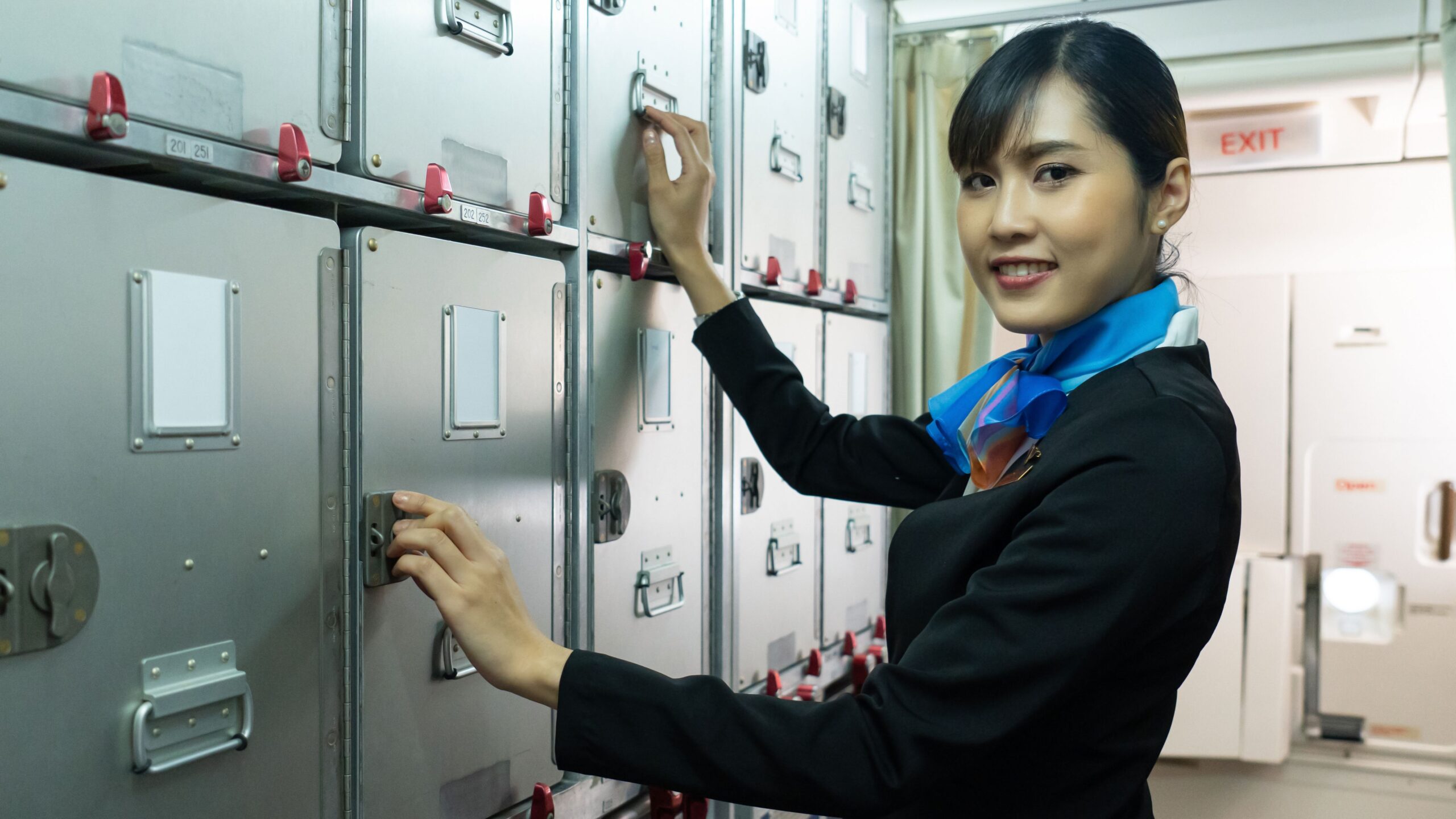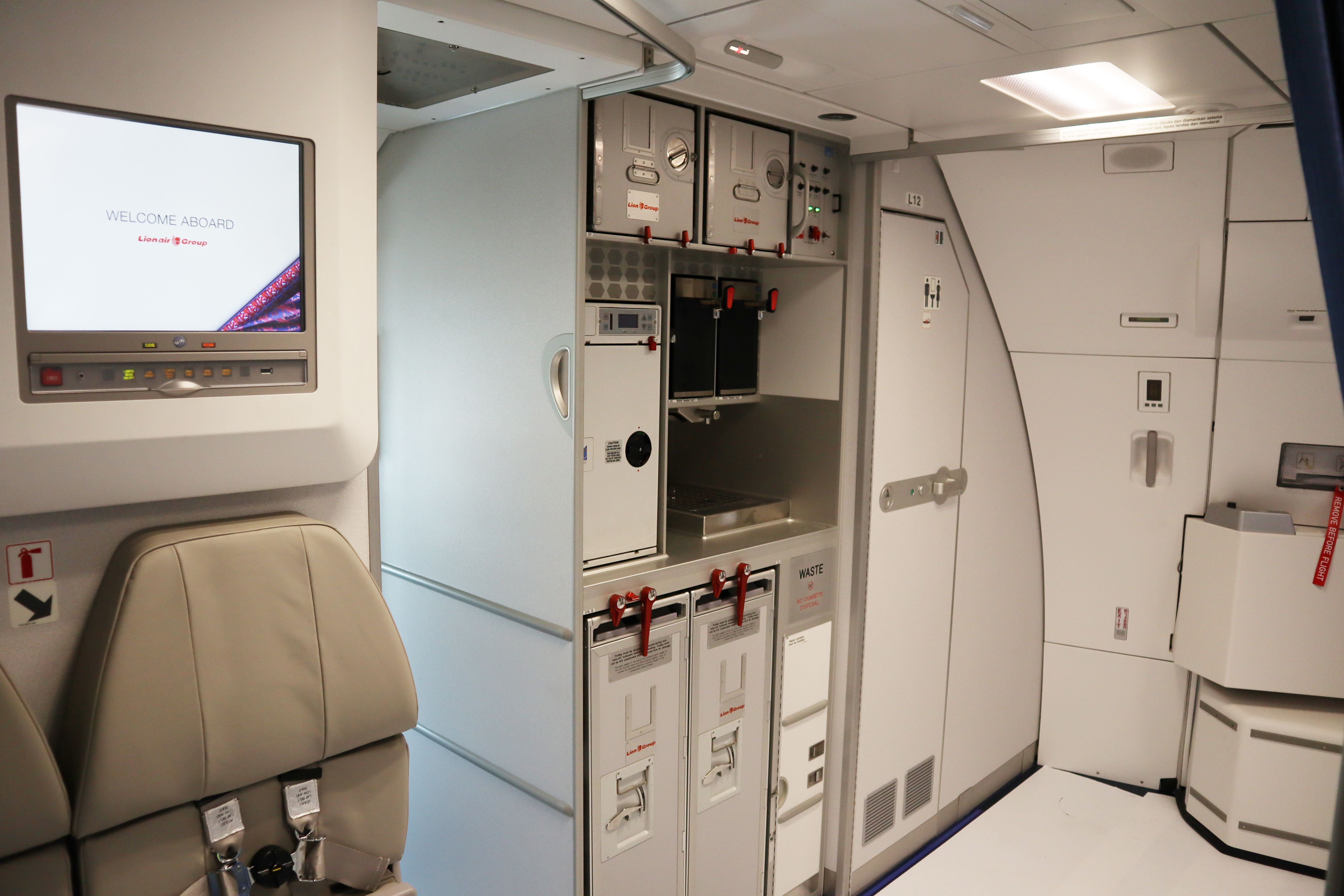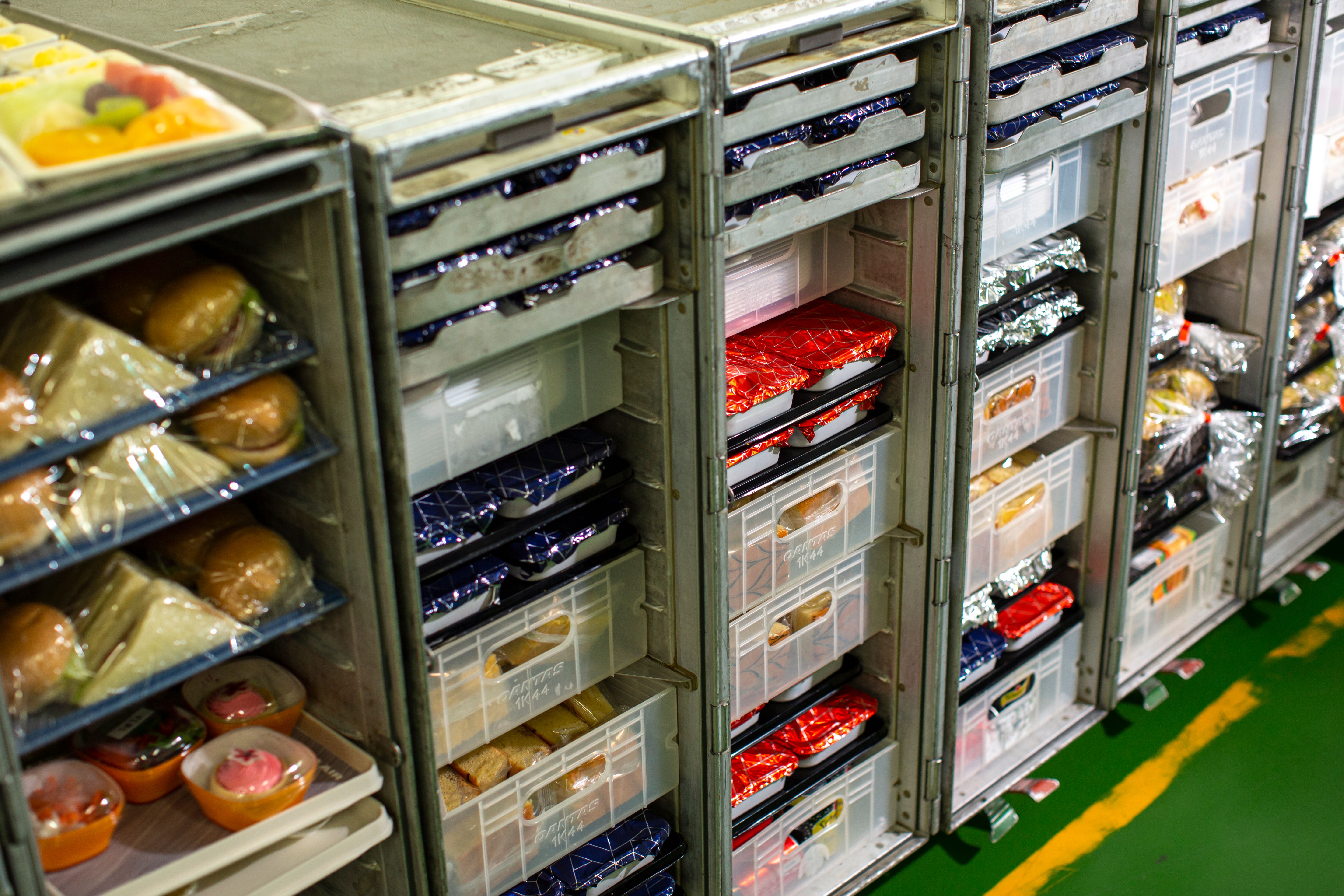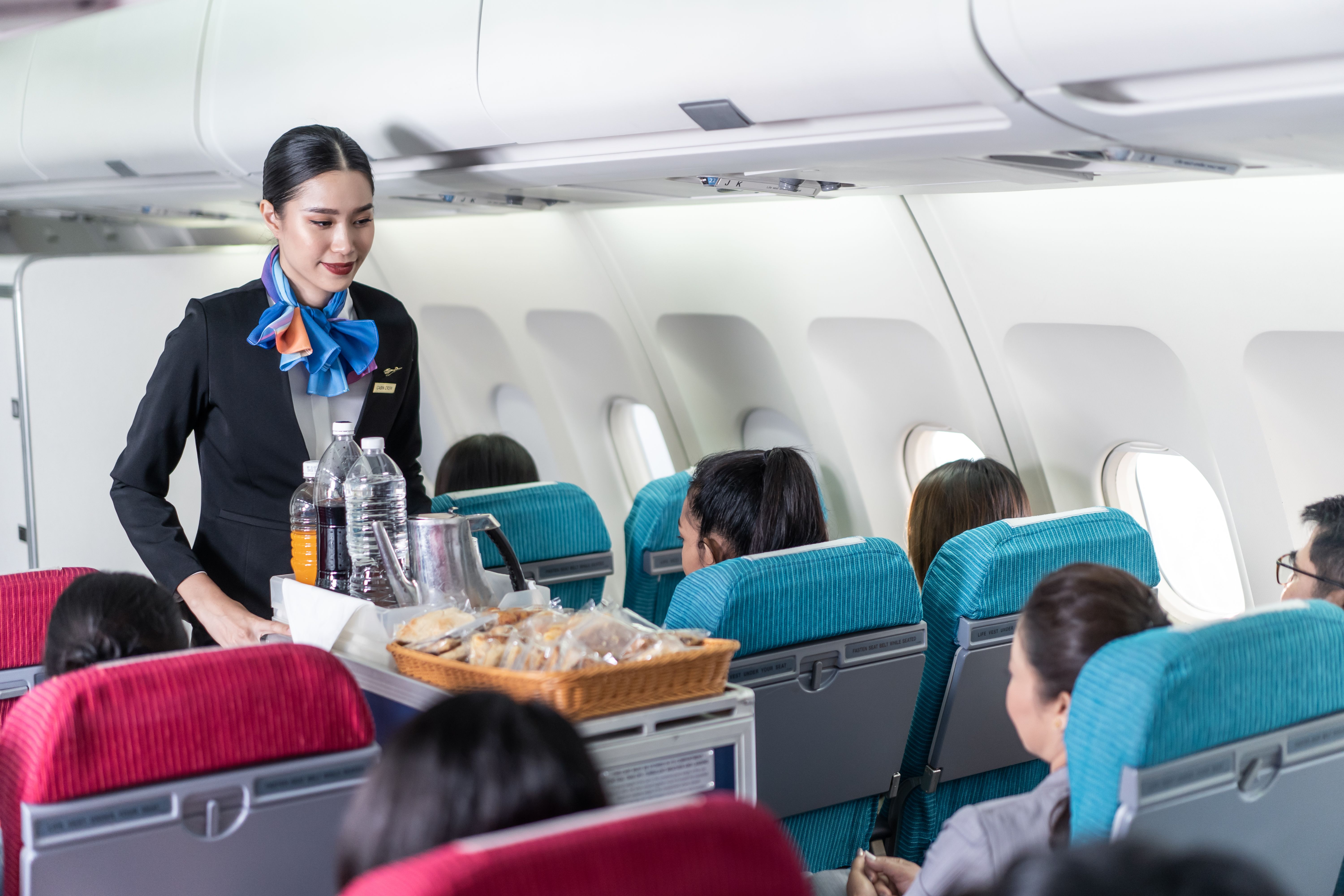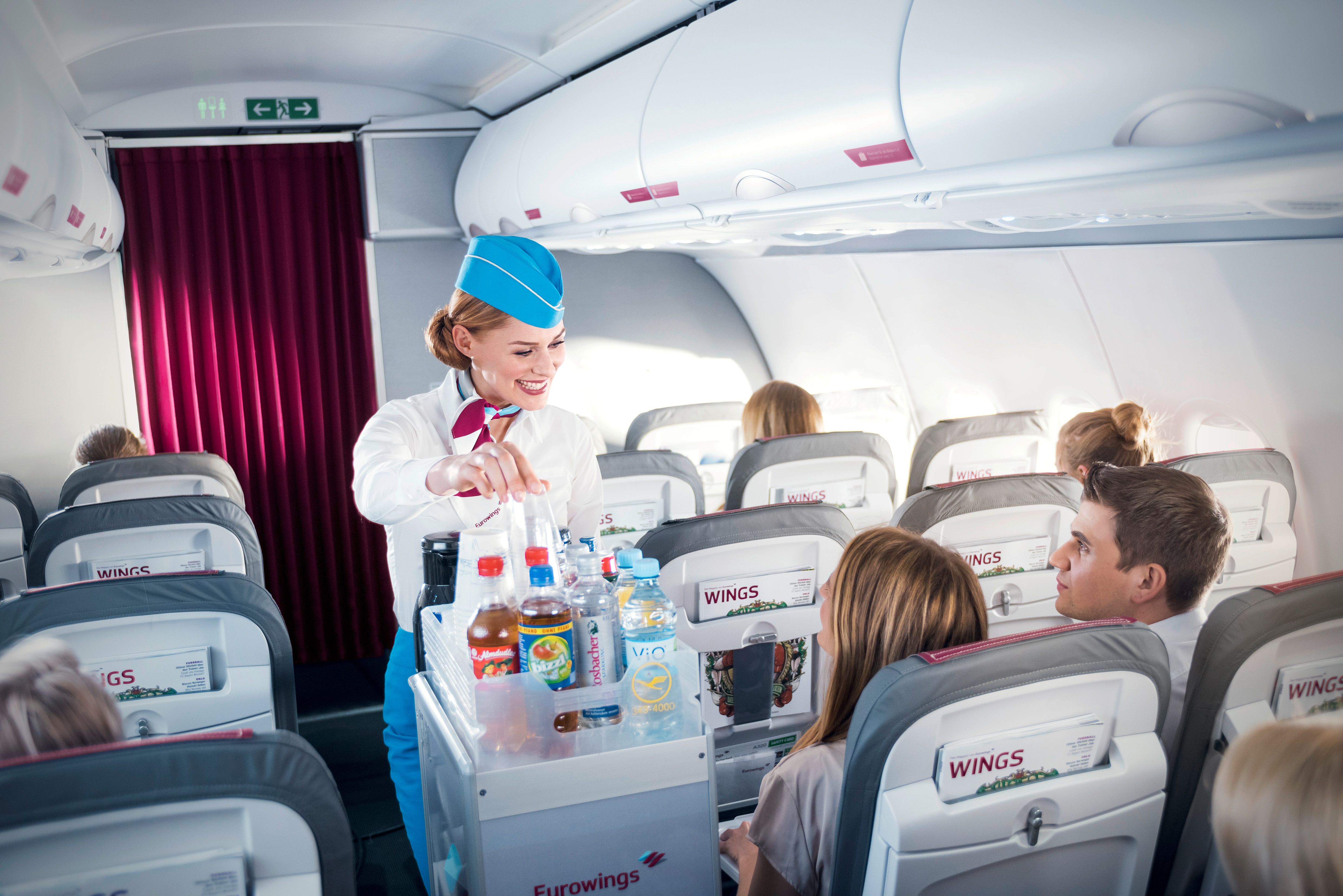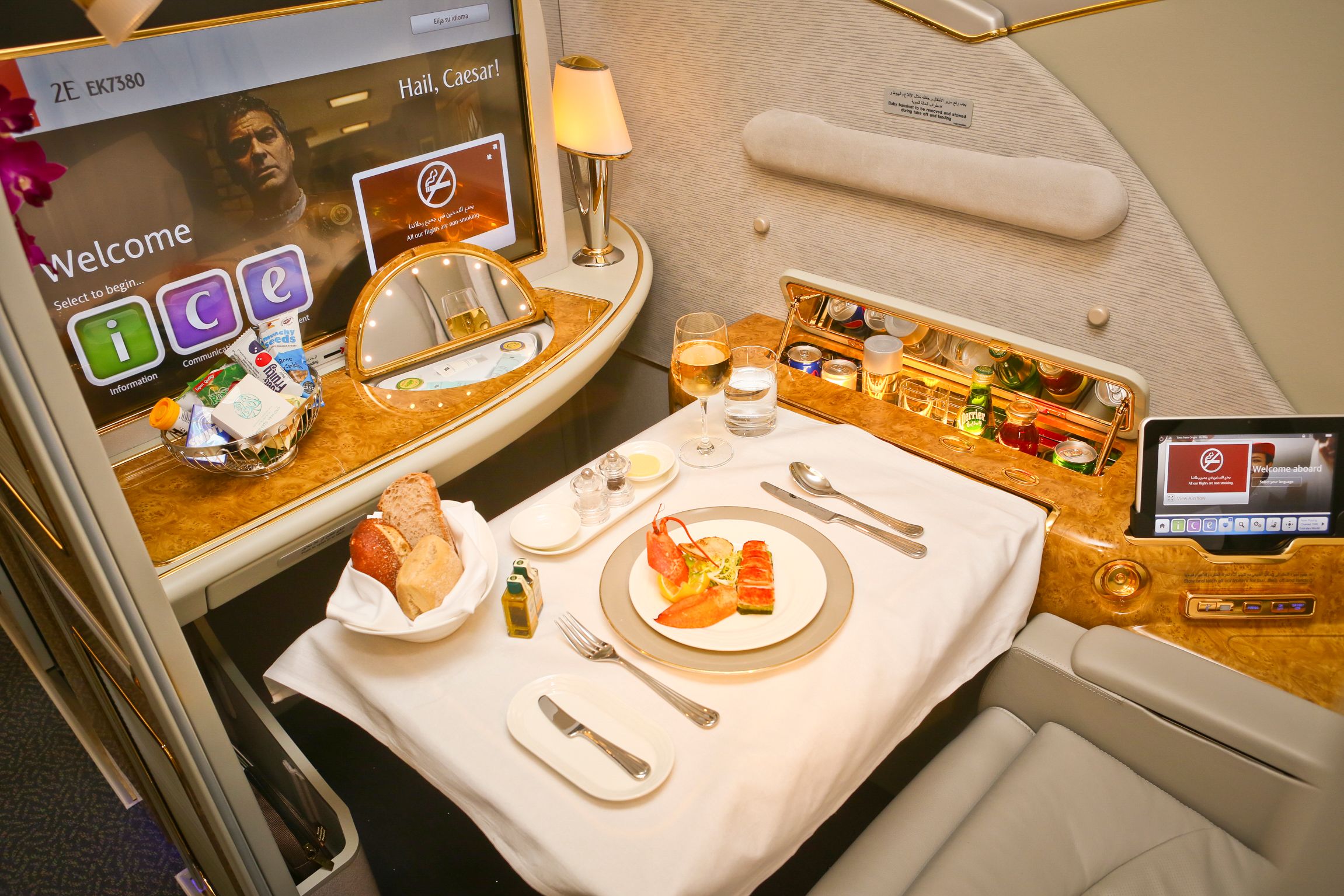While the job description of cabin crew has developed considerably over the decades, one of the core responsibilities of the role remains preparing and serving food during flights. Modern aircraft are equipped with better cooking equipment compared to previous decades, but serving food onboard aircraft is still a complex process from start to finish.
Interestingly, United Airlines was the first carrier to open a dedicated flight kitchen way back in 1936, situated close by to its San Francisco hub. This enabled the airline to serve up fresh, hot food during flights, and it paved the way for other airlines to start serving meals during flights.
Photo: KITTIKUN YOKSAP | Shutterstock
So, just how do the cabin crew manage to provide a hot meal and drinks for the passengers during their flight? This varies considerably – low-cost airlines tend to offer a menu for purchases inflight, while most of the legacy airlines, at least on longer flights, still provide an inclusive inflight meal and drinks service.
Pre-flight prep
The caterer prepares the food by partially cooking and flash-chilling the meals. Meals are then transported to the assigned aircraft and loaded either in racks, atlas boxes (metal containers that fit in all aircraft) or carts into the galleys (the kitchens on the aircraft). If the plane is performing a multi-sector flight or there may not be a catering facility at the airport, then extra catering will be loaded for the flight.
Photo: BK Awangga | Shutterstock
When the cabin crew arrives at the aircraft, and once all security and safety checks are complete, they will check that the numbers from the passenger list and the catering match. If it is a short flight, under 90 minutes, then the crew will switch on the ovens to pre-heat meals on the ground – the caterers will put the racks in the ovens during loading in this case.
During boarding, the purser or senior crew member in each galley starts to prepare items ready for the bar service to save time. The galleys are usually tiny kitchens with between 2 and 4 ovens, beverage makers, and tightly packed meal and bar carts sit under the countertop with atlas boxes stored above. Every possible space is filled – there is not much room to maneuver!
Inflight service
After take-off and once it is safe to move around the galley, the meals are heated in the galley ovens in each galley. On an A320 or B737, there are only two galleys at the front and back of the aircraft, whereas a B777 or A340 may have four galleys, depending on the configuration.
Photo: Hananeko_Studio | Shutterstock
The cabin crew starts to set up the meal carts (pre-loaded with the tray set-ups) and the bar carts in a very precise way – it is done the same way by every crew member at the airline for ease of service. The bar service will include glasses, different juices, soft drinks, spirits, napkins and snacks and other accompaniments. The meals may be placed on top of the meal cart, in the racks with an insulated box on top, or loaded directly onto the tray set-ups. The tea and coffee makers will be put on to brew.
Service flow
Service usually starts with special meals (diabetic/vegan etc…) going out. Then, the meal carts go into the aisles at a predetermined position (depending on how many meals are in the cart), and meals are handed out to passengers. Close behind is the bar service, so that the passenger can have a drink with their meal. After that, there is usually tea and coffee service, followed by an empty meal cart to clear finished trays. Another empty meal cart often follows with a water service.
Photo: Eurowings
Depending on the length of the flight, the service changes slightly. Up to 5 hours, the above service flow would be sufficient. On a long-haul flight, the service would run the same way, but two or three water/juice services would be included, and an extra meal service would be added.
Economy, Premium Economy, Business Class, First Class
The style of class can also change the service process slightly. Premium could include a china tray set up and a real glass of champagne. Business adds more services – the starter would be served before the main meal, then there will be dessert and cheese service plus numerous offerings of different wine and champagne for each course.
Photo: Emirates
First class is on-demand when the passenger wants, so one crew will work in the galley preparing five-star presented meals, and one works in the cabin. The meals are not pre-heated but cooked on demand.
On a smaller aircraft type like the A320/B737 with two galleys and four crew, around 180 meals will go out during a flight. On a larger aircraft with four galleys and eight or ten crew, that is between 350 and 400 meals – bear in mind that cabin crew must also juggle many others duties during flights, so it is quite the undertaking getting that many meals out!

